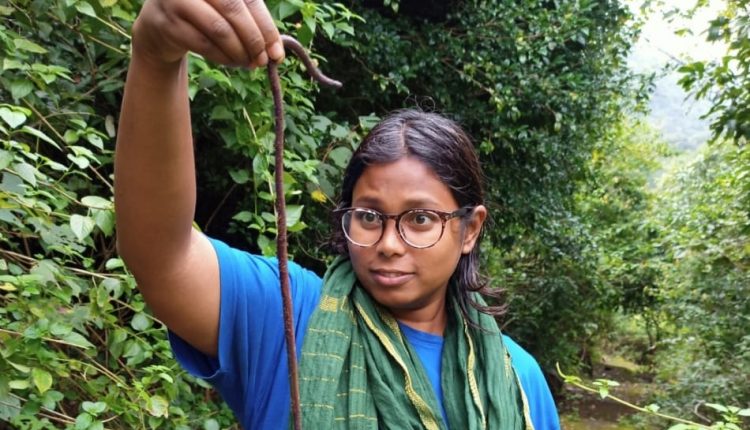In a significant breakthrough, researchers from the Central University of Odisha (CUO) in Koraput, in collaboration with scientists from Mahatma Gandhi University, Kottayam, Kerala, have made a remarkable discovery by identifying two new species of Megascolex earthworms in the Eastern Ghats of Odisha. During a comprehensive earthworm diversity study conducted in various parts of Koraput, Ayusmita Naik collected large earthworm specimens from Rani Duduma and Jeypore Ghati. Under the guidance of Prof. Sharat Kumar Palita, Dean of the School of Biodiversity and Conservation of Natural Resources at CUO, these specimens underwent thorough examination in the laboratory.
With the assistance of Dr. R. Paliwal, a retired scientist from the Zoological Survey of India, and earthworm specialists Dr. Prasantha Narayanan and Dr. AP Thomas from the Advanced Centre of Environmental Studies and Sustainable Development at Mahatma Gandhi University, the researchers identified two previously unknown species of large earthworms. These species, named Megascolexjeyporeghatiensis and Megascolexquadripappilatus, are entirely novel to the scientific community and have been published in the esteemed international taxonomic journal Zootaxa. Belonging to the Genus Megascolex, these newly discovered earthworm species were found in the relatively unexplored hills of the Eastern Ghats in Odisha. They are characterized by specific features such as two pairs of spermathecal pores in intersegmental furrows 7/8/9, holandric nature, seminal vesicles in segments 9 and 12, absence of penial setae, and calciferous glands. These species thrive in deciduous forests with brownish gravel-loamy soils and are endemic to India.
This groundbreaking discovery expands the global count of Megascolex species to 70, with 34 of them found in India. Typically, Megascolex species are concentrated in the southern portion of the Western Ghats mountain ranges in the southwest corner of Peninsular India. However, the identification of these new species extends the range of Megascolex earthworms into the northern Eastern Ghats, further enriching our understanding of earthworm biodiversity in the region.
In a significant breakthrough, researchers from the Central University of Odisha (CUO) in Koraput, in collaboration with scientists from Mahatma Gandhi University, Kottayam, Kerala, have made a remarkable discovery by identifying two new species of Megascolex earthworms in the Eastern Ghats of Odisha. During a comprehensive earthworm diversity study conducted in various parts of Koraput, Ayusmita Naik collected large earthworm specimens from Rani Duduma and Jeypore Ghati. Under the guidance of Prof. Sharat Kumar Palita, Dean of the School of Biodiversity and Conservation of Natural Resources at CUO, these specimens underwent thorough examination in the laboratory.
With the assistance of Dr. R. Paliwal, a retired scientist from the Zoological Survey of India, and earthworm specialists Dr. Prasantha Narayanan and Dr. AP Thomas from the Advanced Centre of Environmental Studies and Sustainable Development at Mahatma Gandhi University, the researchers identified two previously unknown species of large earthworms. These species, named Megascolexjeyporeghatiensis and Megascolexquadripappilatus, are entirely novel to the scientific community and have been published in the esteemed international taxonomic journal Zootaxa. Belonging to the Genus Megascolex, these newly discovered earthworm species were found in the relatively unexplored hills of the Eastern Ghats in Odisha. They are characterized by specific features such as two pairs of spermathecal pores in intersegmental furrows 7/8/9, holandric nature, seminal vesicles in segments 9 and 12, absence of penial setae, and calciferous glands. These species thrive in deciduous forests with brownish gravel-loamy soils and are endemic to India.
This groundbreaking discovery expands the global count of Megascolex species to 70, with 34 of them found in India. Typically, Megascolex species are concentrated in the southern portion of the Western Ghats mountain ranges in the southwest corner of Peninsular India. However, the identification of these new species extends the range of Megascolex earthworms into the northern Eastern Ghats, further enriching our understanding of earthworm biodiversity in the region.





